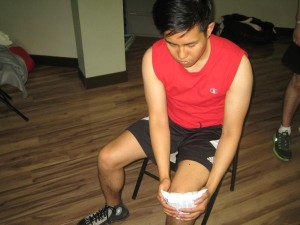Partial knee replacement is a procedure that helps restore the knee function and reduce chronic knee pain. During this procedure, it involves the replacement of damaged parts of the knee while the healthy cartilage and bone are left intact. As for total knee replacement, it involves the replacement of the whole knee joint. The individual should consult a doctor regarding the possible complications after a partial knee replacement.
Constant pain
Partial knee replacement is not always a successful procedure for pain relief. In reality, some can even suffer from persistent knee pain after the surgery. The knee pain can be constant or can occur in an intermittent manner after increased physical activity. Some can even experience mild to moderate pain while kneeling on the healed knee. Severe pain complications must be discussed with the doctor. You can learn more about pain management measures by taking part in a course on first aid in Toronto today.

Nerve or blood vessel damage
The nerves and blood vessels surrounding the knee joint can sustain damage during the partial knee replacement. The damage on the nerve can lead to tingling sensations, burning or numbness within the affected leg after the surgery. Once the surgical site starts to heal, the symptoms of nerve damage usually subside. Trauma to the blood vessels is evident if the individual experiences persistent numbness, tingling or discomfort.
Deep vein thrombosis
The usual complication after partial knee replacement surgery is the development of blood clots in the legs. Deep vein thrombosis can disrupt the normal flow of blood through the leg. The individual can experience bruising, swelling or pain in the affected leg which makes it difficult for the individual to place weight on the leg.
A blood clot that detaches from the interior of a leg vein can travel through the bloodstream and into the lungs. This is a life-threatening condition called as pulmonary embolism in which the individual can suffer from severe breathing difficulty or heart rate irregularities. Once these complications occur, the individual should seek immediate medical care.
Infection
An infection of the knee joint or the surgical site can occur as a complication of partial knee replacement. The individual will notice that the knee joint feels warm and tender to the touch. The symptoms can progressively increase in terms of severity. In some individuals, they can also experience the accumulation of fluid around the newly placed knee implant. As for the infection of the surgical site, it causes redness, inflammation, tenderness or drainage. Individuals who develop infection require treatment involving antibiotics to help resolve the symptoms.
Issues with the implant
As time passes by, the partial knee implant can slacken and fall away from the bone. Once this occurs, additional surgery is required in order to replace the implant with a new one.
